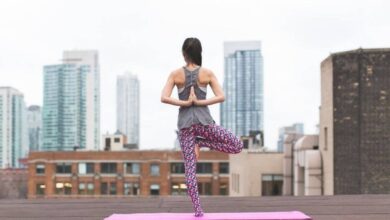The 5 Yamas in Yoga – What Do they Teach?

Table of Contents
What Are Yamas?
Yamas signifies “restriction” in Sanskrit. Strict texts of Hinduism and Jainism frame five social restrictions and moral codes known as the Yamas. In the Indian sage Yama yoga composition, yamas are the principal appendage of yoga in the Ashtanga yoga — additionally called the eight-limbed way.
Philosophy of Yoga –
The primary way of thinking of yoga is straightforward: psyche, body, and soul are one and can’t be plainly isolated. However, there is a huge number of philosophical thoughts that are useful to investigate the more profound components of the body, psyche, and soul. Meditating and understanding these thoughts are fundamental for shifting our view of ourselves as isolated, to understanding the unitive state.
Yoga reasoning, like Buddhism, accepts that profound obliviousness makes enduring and ties us to the wheel of samsara (pattern of resurrection). The evacuation of our obliviousness can follow a wide range of ways and procedures in yoga. In any case, the focal philosophical meaning of yoga revolves around the act of mental wisdom, separation, otherworldly information, and mindfulness.
What Are the 5 Yamas of yoga?
Various texts might incorporate various Yamas, yet the five Yamas found in Yoga Sutras are the most popular.
- Ahimsa: Non-brutality, or keeping away from contemplations or activities that could hurt others, including nature. To rehearse ahimsa, attempt a cherishing generosity contemplation and send benevolence to friends and family, yourself, and your local area. In your yoga practice, treat your body with benevolence by noticing your actual cutoff points and resting when required.
- Asteya: Non-taking. Present-day translations of this Yama in yoga likewise incorporate non-apportionment and giving. Asteya goes past not taking material belongings — it is likewise about not taking from the climate and yourself. Practice asteya by being aware of your utilization of normal assets, and stay away from unapproved allocation of thoughts and societies.
- Satya: Truthfulness in words, considerations, and activities. The Sanskrit word sat signifies “what is.” Practice Satya by noticing reality without judgment. In your yoga practice, be straightforward with yourself by noticing your body and regarding your cutoff points.
- Aparigraha: Non-possessiveness of material products and individuals. Practice aparigraha by relinquishing assumptions and connections. Drop your assumptions about what an asana (present) should look like to completely encounter the posture more.
- Brahmacharya: Celibacy (additionally deciphered as constancy), preservation of energy, or balance. You can integrate brahmacharya into your life by resting as the need should arise. Track down ways of unwinding and re-energize so you have the energy to do things that mean a lot to you. A kid’s posture is an extraordinary method for feeling grounded and upheld in rest.
Where Do the Yamas Fit in the Eight Limbs of Yoga?
The eight appendages of Ashtanga yoga frame lifestyle choices as a deliberate life. The prior appendages, beginning with the Yamas, center principally on essential moral teachings, and the later appendages center around inner ideas, similar to reflection. The eight appendages of yoga are:
- Yamas: Social restrictions and moral codes of yoga. The Yoga Sutra depicts five distinct yamas, including ahimsa (peacefulness), asteya (non-taking), Satya (honesty), aparigraha (non-possessiveness), and brahmacharya.
- Niyamas: Observances, rules, and rules. The Yoga Sutra portrays five unique niyamas, including saucha (neatness), santosha (satisfaction), tapas (self-control), svadhyaya (self-reflection), and ishvarapranidhana (give up to a higher power).
- Asana: Yoga stances or postures. This appendage accentuates the significance of really focusing on the body and fostering the discipline to propel otherworldly development.
- Pranayama: Use of breath. Pranayama comprises breathing strategies that can decrease pressure and work on physical and emotional wellness. In pranayama, you center profoundly around breath control through inward breath, breath maintenance, and exhalation designs.
- Pratyahara: Withdrawal. Pratyahara is separating your brain from outer unsettling influences and controlling your response to them. During pratyahara, your five receptors actually identify the outside feelings, yet you don’t permit them to upset your perspective.
- Dharana: Concentration. The objective of Dharana is to tie your awareness to one specific article, spot, or thought. Concentrating on one thing helps calm your psyche by shutting off a way for different contemplations to leak in.
- Dhyana: Meditation. Dhyana is like Dharana, besides during dhyana, you arrive at a condition of being where you are so totally submerged in your reflection that it turns into a piece of your cognizance.
- Samadhi: Bliss or edification. Samadhi is the most elevated condition of cognizance one can accomplish through reflection. It comprises a yoga specialist arriving at profound illumination where oneself, the brain, and the object of reflection combine into one.
Accordingly, the early appendages like yamas act as the establishment for the more inward, contemplation-based later advances.
Instructions to Do Yoga Safely and Avoid Injury
Legitimate structure and strategy are fundamental to guarantee the well-being and viability of a yoga practice. If you have a past or previous medical issue, counsel your doctor prior to rehearsing yoga. Yoga postures might be changed in light of your singular necessities.
Disclaimer: This article is only written for basic and general informational purposes only. The Statements contained here have not been evaluated by the FDA and neither the efficacy of these products has been confirmed by FDA-approved research. All information presented here is not meant as a substitute for or alternative to information from health care practitioners. There’s no guarantee of specific results and the results can vary. Users must not view the content as medical advice in any way. Users are also required to ’NOT SELF-MEDICATE’ and always consult your health care professional before taking any medicines or undergoing any treatment. DivyaAyushCare and the author will not be responsible for any act or omission by the User arising from the User’s interpretation of the content.

